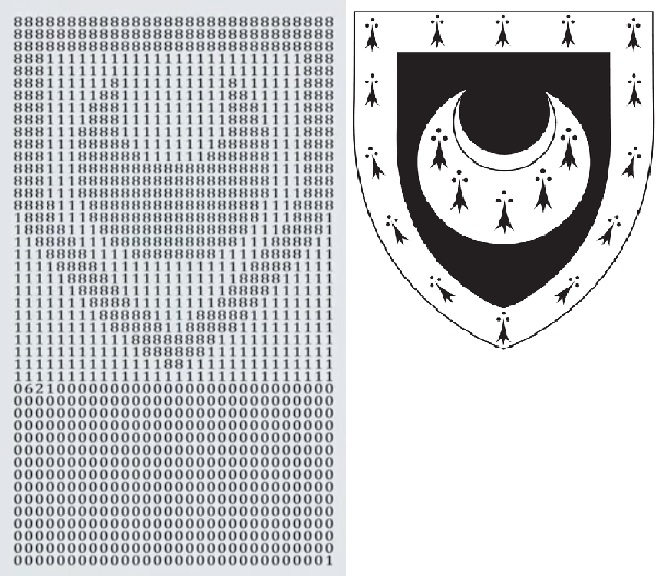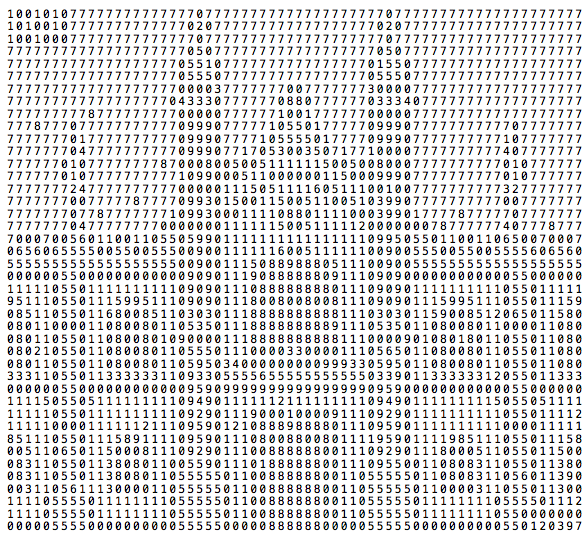On Thursday, Numberphile published this video, which features a startling wall hanging in the Senior Combination Room at Trinity Hall, Cambridge: Junior research fellow James McKee devised a 1350-digit prime number whose image forms a likeness of the college’s coat of arms. (The number of digits is significant, as it’s the year that Bishop William Bateman founded the college.)

It turns out that finding such “prime” images is easier than one might think. In the video description, McKee explains: “Most of the digits of p were fixed so that: (i) the top two thirds made the desired pattern; (ii) the bottom third ensured that p-1 had a nice large (composite) factor F with the factorisation of F known. Numbers of this shape can easily be checked for primality. A small number of digits (you can see which!) were looped over until p was found that was prime.'”
Indeed, on the following day, Cambridge math student Jack Hodkinson published his own prime number, this one presenting an image of Corpus Christi College and including his initials and date of birth:

Hodkinson explains that he knew he wanted a 2688-digit prime, and the prime number theorem tells us that approximately one in every 6200 2688-digit numbers is prime. And he wasn’t considering even numbers, which reduces the search time by half: He expected to find a candidate in 100 minutes, and in fact found eight overnight.
(Thanks, Danesh.)
